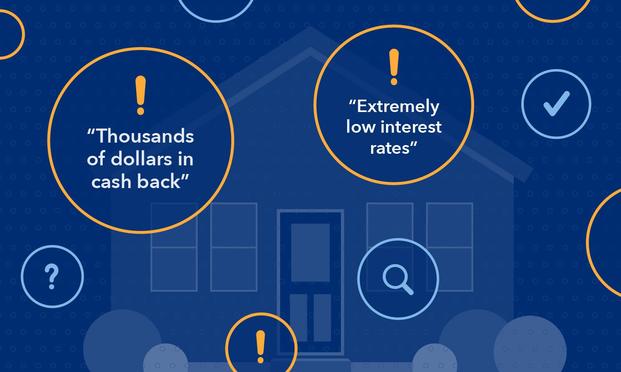 Military Update: Phone calls can begin only a day after veterans close on VA-guaranteed home loans. Brokers will claim they can offer an even lower interest rate, or a better strategy for refinancing, that will cut mortgage payments even more.
Military Update: Phone calls can begin only a day after veterans close on VA-guaranteed home loans. Brokers will claim they can offer an even lower interest rate, or a better strategy for refinancing, that will cut mortgage payments even more.
The practice is called serial refinancing, or home loan churning, and the goal is to generate profits for lenders. The side effects often are more home debt on veterans and more financial risks for their families.
The number of lenders aggressively targeting veterans with misleading refinance schemes has fallen to less than a dozen, said Jeffrey London, director of loan guaranty service at the Department of Veterans Affairs (VA).
However, he told a House subcommittee this month, VA is committed to better protecting veterans against remaining bad actors. Draft regulations to strengthen safeguards and raise awareness will be published soon, he promised.
Industry witnesses suggested stronger oversight can’t come too soon for veterans and for investors in government-secured mortgages. Sounding the loudest alarm at the hearing was Michael R. Bright, chief operating officer for the Government National Mortgage Association. More commonly called Ginnie Mae, the agency provides government guarantees behind VA and other federal home loans.
“I believe 2018 will be a critical year” on the churning issue, Bright told the House veteran affairs’ economic opportunity subcommittee. “If we cannot get a handle on this behavior, abusive lending will continue to infect our market and our program. That could drive away important sources of capital and may create an environment where veterans are viewed as suitable prey for aggressive lending.”
Abusive lending that targets veterans “are alarming on so many levels, Bright said. He called loan churn “borderline predatory” behavior and “reminiscent of lending practices used by many in the industry prior to the 2008 financial crisis.”
The sales pitch made to homeowners these days, with interest rates rising, typically involves variable interest rate loans or refinancing schemes that lower mortgage payments but raise loan amounts by rolling in new settlement fees or adding years to loan payoff periods.
Rep. Beto O’Rourke (Texas), ranking Democrat on the panel, urged VA to require lenders to present in large type on page one of loan documents the financial consequences of refinancing. Industry calls this a “net tangible benefit test.”
Veterans would see at a glance not only how mortgage payments decline but how the size of loans grow, how payoff periods lengthen and how many months must pass before the savings of reduce payments recoup the costs of refinancing.
London said VA already requires that such information appears on a document called the Interest Rate Reduction Refinance [IRRL] worksheet. Trouble is, London conceded, lenders need not show borrows that worksheet until the day they close on a loan and face “a mountain of other paperwork that they don’t read.”
That is going to change, London promised. He already has decided to require lenders to provide that disclosure “up front,” London said. “VA will also get a copy the same time…so we can be the partner with the veteran.…That’s something I can do today, administratively, without any regulation or statutory changes.”
So when would that happen, O’Rourke asked.
“We have to make some system changes and obviously we have to put out some guidance to lenders on what information we need…[M]y goal is to make that happen this calendar year,” London said.
“Seems like a relatively easy fix,” O’Rourke said, clearly surprised a simple change would take VA almost a year to execute.
VA has been criticized in the past for ineffective action on the loan churning issue. In 2014, it issued a regulation to impose “seasoning” and recoupment” requirements on lenders. The new rules said loans should be on the books at least six months before a refinancing, and all settlement fees rolled into the new loan should be recouped through lowered mortgage payments within 36 months.
Unfortunately, the regulation had no teeth. It continued to guarantee home loans even if lenders didn’t meet the new requirements.
Ginnie Mae can act more quickly. In February 2017, it told lenders that loans not meeting VA seasoning and recoupment rules set in 2014 would not be included in its securitized loan pools for the secondary mortgage market. By October, the number of veterans getting more than one home loan per year was cut in half.
Bright told the subcommittee Ginnie Mae soon will be taking more steps against serial refinancing of VA loans. Lenders who clearly abuse veterans “will be put on notice” and their loans made ineligible for Ginnie Mae flagship security pools. Their alternative will be “custom pools” with loans that perform “materially different than our average,” Bright said.
“This will help prevent the bad actions of some issuers” from dampening “security pricing for those who use our program in a responsible manner,” he said.
Rep. Jodey Arrington (R-TX), subcommittee chairman, said he doesn’t favor a legislative solution for loan churning without evidence lenders are being deceptive or withholding critical information from borrowers.
“I feel our veterans are some of the toughest, mentally strong, mentally competent…folks [who] have borne tremendous responsibility,” Arrington said. If lenders are providing correct information to borrowers, “I have a hard time believing they are necessarily being taken advantage of.”
If lenders are “holding out to do one thing and then they’re doing another, that’s a problem. And if you can’t stop that at the VA and Ginnie Mae, let’s figure out how we can [with] an act of Congress…But to suggest they can’t fend for themselves when reading what they’re getting into, I struggle with that.”
A dozen senators believe it is time for Congress to act. Sens. Thom Tillis (R-N.C.) and Elizabeth Warren (D-Mass.) last week introduced their Protecting Veterans from Predatory Lending bill alongside 10 co-sponsors, an even split of Republicans and Democrats. Key provisions of the bill would:
-- Block veteran homeowners from refinancing within six months of original VA loans.
-- Mandate that lenders present a “net tangible benefits” summary for loan refinancing to clearly show the financial impacts.
-- Require that the interest rate on a refinanced VA loan be at least a half percentage point lower than original loan rate.
-- Require that fees on the refinanced loan be recouped within 36 months.
“The way we feel about it,” said Warren, “if the federal government is going to be helping these companies out [with loan guarantees], we think the refinancing should be done, not when it’s in the company’s interest but when it’s in the interest of our veterans.”
Congress often is bitterly divided. But on this issue, Tillis said, “we have an opportunity to show bipartisanship works.”
To comment, write Military Update, P.O. Box 231111, Centreville, VA, 20120 or email milupdate@aol.com or twitter: @Military_Update.
# # # # Tom Philpott has been breaking news for and about military people since 1977. After service in the Coast Guard, and 17 years as a reporter and senior editor with Army Times Publishing Company, Tom launched "Military Update," his syndicated weekly news column, in 1994. "Military Update" features timely news and analysis on issues affecting active duty members, reservists, retirees and their families. Visit Tom Philpott's Military Update Archive to view his past articles. Tom also edits a reader reaction column, "Military Forum." The online "home" for both features is Military.com.  Tom's freelance articles have appeared in numerous magazines including The New Yorker, Reader's Digest and Washingtonian. His critically-acclaimed book, Glory Denied, on the extraordinary ordeal and heroism of Col. Floyd "Jim" Thompson, the longest-held prisoner of war in American history, is available in hardcover and paperback. Buy Glory Denied from Amazon
Tom's freelance articles have appeared in numerous magazines including The New Yorker, Reader's Digest and Washingtonian. His critically-acclaimed book, Glory Denied, on the extraordinary ordeal and heroism of Col. Floyd "Jim" Thompson, the longest-held prisoner of war in American history, is available in hardcover and paperback. Buy Glory Denied from Amazon





